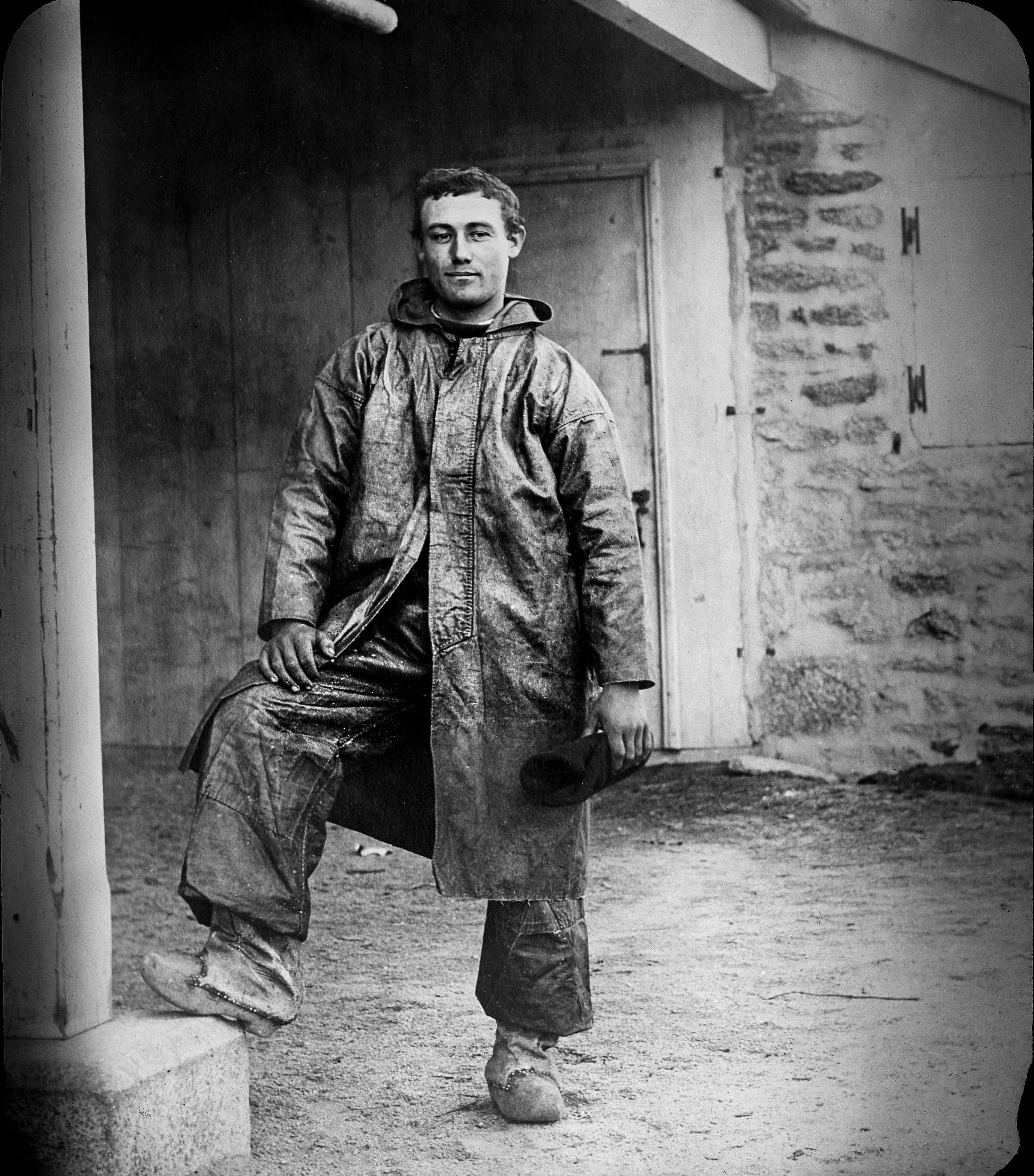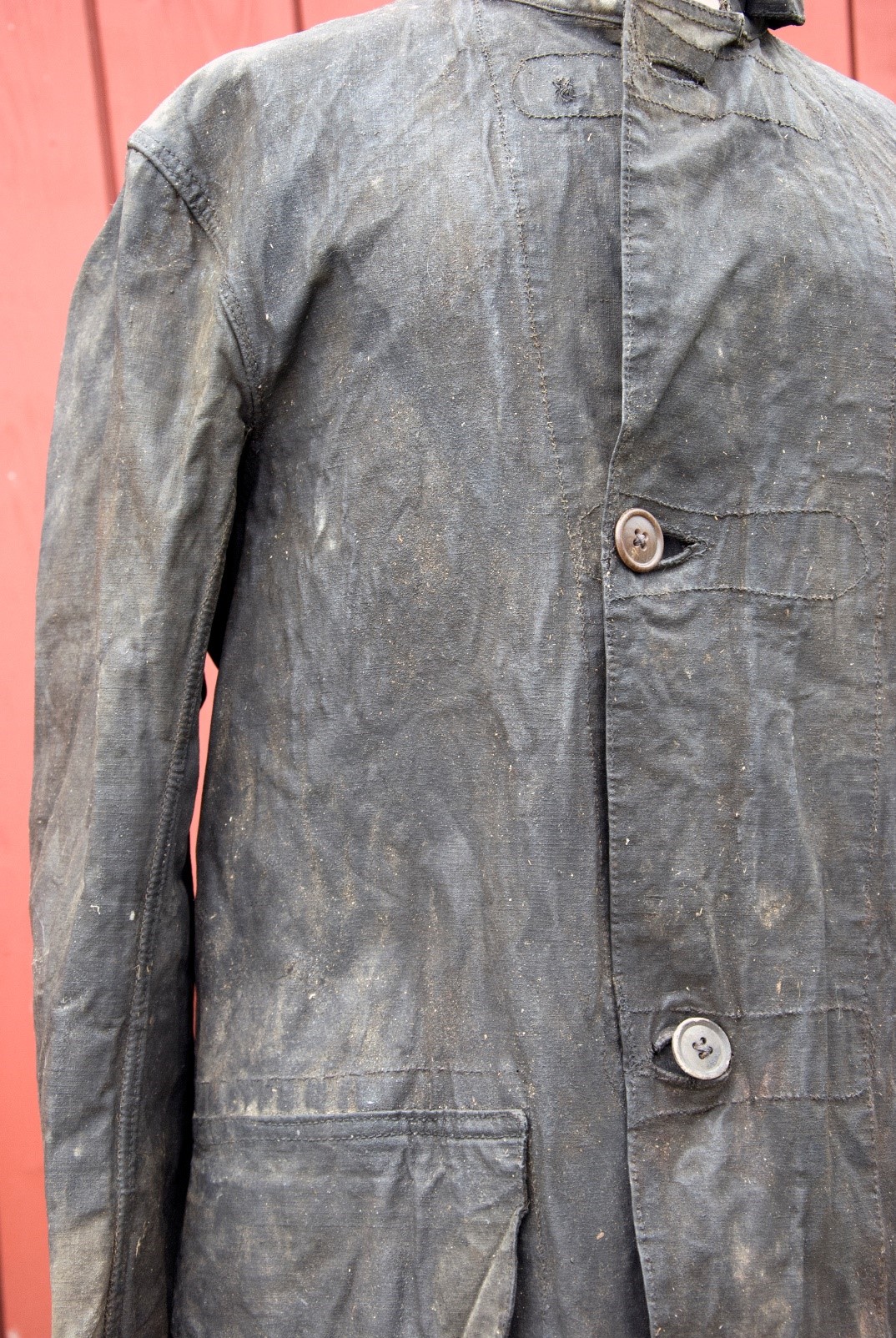Inspired by the ranges of waterproof workwear manufactured using nylon and polyester (PVC), the seams of which were made watertight using hot melt adhesive tapes, and more recently high frequency fabric welding technology, the Guy Cotten ciré has become a staple for both fishermen and amateur sailors alike. The direct descendant of the cirage, a traditional part of a fisherman’s outfit, it is the subject of constant new innovations, with a successful marketing campaign bolstered by its logo, created in 1974 by graphic designer Alain Le Quernec.

A cirage was made from very strong ecru cotton. Successive soakings in linseed oil rendered it waterproof, before it was dried outside on wooden tables made of mismatched planks to allow for good air circulation. The thick canvas would graze the seamstresses’ hands, and their needles, which were hard to pass through the fabric, would often end up pricking their fingers. When the cirage rubbed against sailors’ skin over a long period of time, it would create skin lesions known as fleurs d’Islande (Icelandic flowers).
Cirages were worn by workers on land, on construction sites, or in the fields and by fisherman working on the cod trawlers off Iceland and Newfoundland, as well as those fishing off the coast all over Brittany. The cirage at that time, was worn over a shirt, wool layer, jacket and canvas trousers.

The appropriation of the ciré by yachtsmen taking part in the Belle Plaisance regatta at the beginning of the 20th century was reflected in clothing catalogues aimed at this type of sailor. In a pastiche of the French navy’s hierarchy, this clothing range for “naval officers and boat owners” was comfortably lined underneath the harsh fabric, with flannel on the underside of suede garments and satinette inside the trousers.
Today’s ciré is the reference point for nautical fashion par excellence. It has brought the Guy Cotten business great prosperity and the company is now responsible for more than 80% of sales for professional fishing clothing in France.
Translated by : Tilly O’Neill


